Lombardy Poplar Tree (Populus Nigra Italica) Profile
Written by Iris
Oct 30 2021
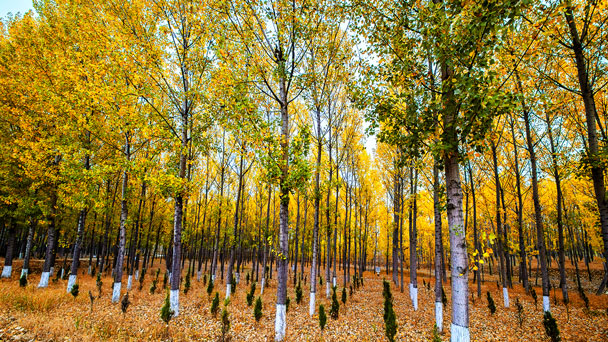
Often planted for its rapid growth and usefulness as a short-lived screen or windbreak, Lombardy Poplar Tree consists of many short, upturned branches forming a slender column that can reach a height of 40 to 60 feet. The leaves are bright green, turn to a blazing golden yellow in autumn, and then fall. Small, inconspicuous flowers appear in spring.
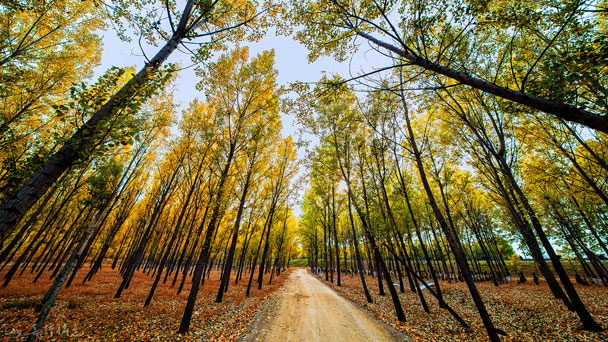
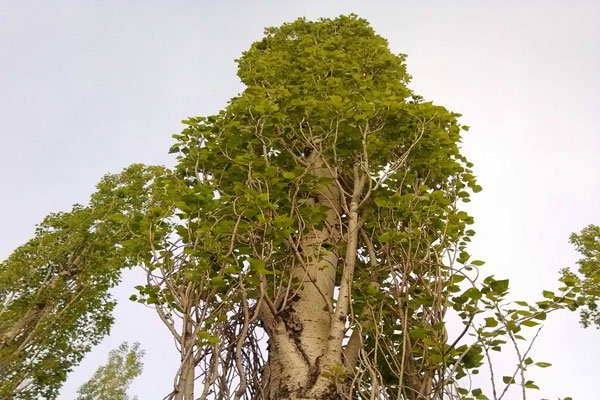
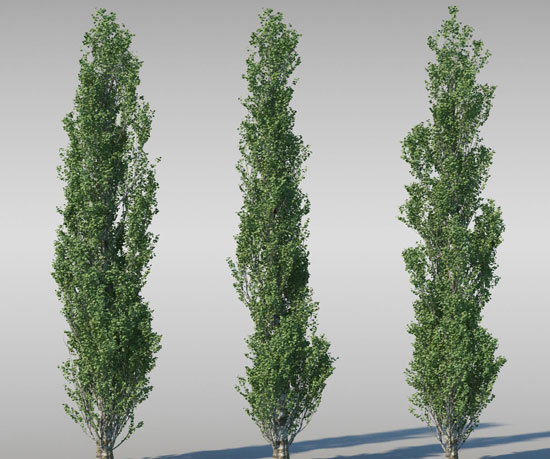
Poplar cuttings do best if taken from healthy trees, especially if taken in the early morning. Use a sharp, thin-bladed knife or sharpened pruning shears and remove all the leaves from the bottom half of a 6-inch stem. If the leaves on your cutting are large, cut them in half to reduce water loss during rooting. Place the cutting up to half its length in a medium made of half peat and half sand; water well and keep in a spot that receives indirect sunlight. Keep the soil moist but not saturated by occasionally misting the cutting. When it has rooted, transfer it into a larger container or into a separate bed with others as its chances of survival are improved if not immediately planted in its permanent location. Cuttings, also called whips, can be harvested in late fall and refrigerated until planting time. If using this method, be sure to soak the cutting for 24 hours before planting and keep the area weed-free during the first two years of growth as young poplars are easily overtaken by other vegetation.
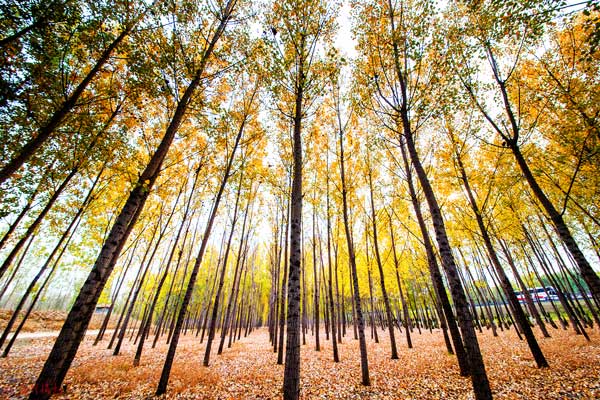
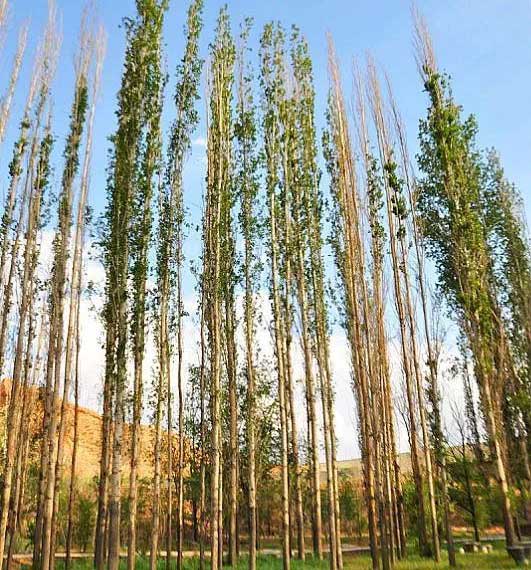
Lombardy Poplar Tree PictureLombardy Poplar Tree InfoLombardy Poplar Tree HistoryHabits of Lombardy Poplar TreeLombardy Poplar Tree DistributionHow to Grow and Care for Lombardy Poplar TreeHow to Grow Lombardy Poplar TreeHow to Care for Lombardy Poplar TreeUses of Lombardy Poplar TreeEdible UsesMedicinal Useslandscape UsesLombardy Poplar Tree Common Pests/Diseases
Lombardy Poplar Tree Picture

Lombardy Poplar Tree Info
| Botanical Name | Populus nigra 'Italica' |
| Common Name | The cultivar is called "Lombardy poplar," the species plant "black poplar" |
| Plant Type | Broadleaf, deciduous tree |
| Mature Size | 40 to 50 ft. tall and 10 to 15 ft. wide for the 'Italica' cultivar; species plant can become much bigger |
| Sun Exposure | Full |
| Soil Type | Sandy to loamy soil |
| Soil pH | Neutral |
| Bloom Time | Spring |
Lombardy Poplar Tree History
On October 14, 1792, Washington instructed his farm manager, Anthony Whitting, to have the gardeners "plant cuttings of the Weeping Willow, yellow willow, or Lombardy Poplar" to create living fences. The shrinking availabiliy of timber with which to make rail fences caused him to turn to live hedges, which could be started with fast-growing lombardy poplar and willows, while slower growing cedars and locusts would eventually take over. Unfortunately, and with great disappointment, he never succeeded due to various setbacks.
Habits of Lombardy Poplar Tree
Be cautious before planting a young, small Lombardy Poplar Tree sapling immediately adjacent to any buildings, foundations, or infrastructure. Fast-growing trees above ground are often fast-growing below, too. The root system of the Poplar Tree can be invasive and destructive if planted in close proximity to these types of materials. Simply plant your Poplar a safe distance away from the home and watch it grow.Lombardy Poplar Tree Distribution
‘Italica’, commonly known as Lombardy poplar or Italian poplar, is believed to have originated in Italy (Lombardy region on the banks of the Po River) in the late 1600s as a fastigiate mutation of a male black poplar (Populus nigra). Lombardy Poplar Tree is primarily native to boggy lowland areas, river valleys, pond margins, forest margins, fields and roadsides in Europe, northwestern Africa and western Asia.
How to Grow and Care for Lombardy Poplar Tree
How to Grow Lombardy Poplar Tree
- With Cuttings
Poplar cuttings do best if taken from healthy trees, especially if taken in the early morning. Use a sharp, thin-bladed knife or sharpened pruning shears and remove all the leaves from the bottom half of a 6-inch stem. If the leaves on your cutting are large, cut them in half to reduce water loss during rooting. Place the cutting up to half its length in a medium made of half peat and half sand; water well and keep in a spot that receives indirect sunlight. Keep the soil moist but not saturated by occasionally misting the cutting. When it has rooted, transfer it into a larger container or into a separate bed with others as its chances of survival are improved if not immediately planted in its permanent location. Cuttings, also called whips, can be harvested in late fall and refrigerated until planting time. If using this method, be sure to soak the cutting for 24 hours before planting and keep the area weed-free during the first two years of growth as young poplars are easily overtaken by other vegetation.

How to Care for Lombardy Poplar Tree
- Light
- Soil
- Water
- Temperature and Humidity
- Fertilizer
- Pruning

Uses of Lombardy Poplar Tree
Edible Uses
Inner bark - dried, ground then added to flour and used for making bread etc. A famine food, used when all else fails.Medicinal Uses
The buds are antiscorbutic, antiseptic, balsamic, diaphoretic, diuretic, expectorant, febrifuge, salve, stimulant, tonic and vulnerary. They are taken internally in the treatment of bronchitis and upper respiratory tract infections, stomach and kidney disorders. Externally, the buds are used to treat colds, sinusitis, arthritis, rheumatism, muscular pain and dry skin conditions. They can be put in hot water and used as an inhalant to relieve congested nasal passages.landscape Uses
This tree is popular for lining roadways, used as garden borders or planted as a focal point in a larger landscape. Few trees offer a faster green screen. With a growth rate of about 6 feet per year you won't wait long for this tree to fill in where you need it. Although the Lombardy poplar is not an evergreen, the close, dense branches still offer coverage in winter. And the light penetration from the fallen leaves will actually help heat up your home in the cold of winter, saving you money on those heating bills.
Lombardy Poplar Tree Common Pests/Diseases
Lombardy Poplar Tree is suseptible to a number of pests and diseases. Cankers are significant problems, especially in hot and humid climates. Cytospora canker attacks the upper branches of the tree and trunk and is often fatal. Additional potential disease problems include dieback, leaf spots, rusts and powdery mildew. Potential insect problems include aphids, borers, caterpillars and scale. Weak wood is easily damaged by wind. Shallow roots can lift sidewalks, make lawn mowing difficult, and damage drainage systems. Falling debris (leaves and twigs) requires frequent clean-up. Also avoid planting this tree in lawns or gardens.Latest Updated
- Benefits of Bugleweed - 7 Science-backed Health Benefits
- Bugleweed Dangers & Side Effects - Is It Poisonous?
- How to Plant Evergreen Trees - What You Should Know
- When to Plant Evergreens - Grow Guide for Evergreen Trees
- 12 Wonderful Evergreen Shrubs for Your Garden
- 12 Popular Evergreen Plants with Pictures for Beginners
- When And How To Prune A Lilac Bush Like a Pro
- How to Grow & Care for Lilac Vine (Hardenbergia Violacea)
- Japanese Lilac Tree (Syringa Reticulata) Care & Propagation Guide
- Shumard Oak Pros and Cons - What to Know
Popular Articles
- Winter maintenance of Antirrhinum Majus
- How to Grow Terminalia Mantaly Tree
- How to Grow and Care for Crossostephium Chinense
- How to grow Antirrhinum Majus in spring
- Peristeria Elata (Dove Orchid) Profile: Info & Care Guide
- Underwatered Snake Plant (Sansevieria Trifasciata) - Signs And How To Fix
- How to Care for Brazilian Jasmine Plant (Mandevilla Sanderi)
- How to Grow & Care for Graptopetalum Purple Delight in Summer
- Rosa Chinensis (China Rose): Plant Growing & Care Tips
- How to Care for Baby Sun Rose (Aptenia Cordifolia)